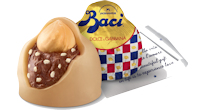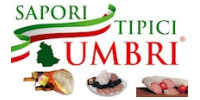Our network:
Tuesday 16 December 2025
Mushrooms selling
One of the region's natural riches, mushrooms are used in many of Umbria's local recipes. You can find dishes featuring mushrooms as one of the ingredients in large and small restaurants, as well as in country houses. Traditional shops selling local produce are a good place to buy mushrooms.
 |
The jewel of Umbrian mushrooms is the Boletus edulis, known as Porcino. Boletus edulis, is sometime called “King bolete”.
PORCINO UMBRO - [cooking]
Cleaning Fresh Boletes
A sparing use of water is important. Try not to allow the water to enter the spore underside of the mushroom since this tends to absorb a good deal. Remove any dark parts of the mushroom. Brush off the caps of Boletus and Leccinum. Peel off the slimy tops of Suillus. If old, gently separate the spongy material from below the cap, using your finger or a knife, and peel off carefully. Check the underside of the cap for worm holes. If there are many, discard the cap. If only a few exist, use the parts where they do not appear.
Cooking Fresh Boletes
These mushrooms can be slippery. To reduce this quality, quickly fry the slices in oil or butter. The simplest method of preparation is to sauté them in olive oil and butter, then add a rich brown sauce and serve as a side dish with steak, broiled chicken, or fish. Alternatively you can layer the fried mushrooms over rice, or baked or mashed potatoes. Another way to quickly prepare boletes is to cut them into thick slices and dip them into beaten up whole eggs. Then dust in seasoned bread crumbs and deep-fry.
Botanically identical species of mushrooms from different localities present considerable differences in size, smell, and taste. This has led researchers to conclude that subtle chemical and physical differences occur in mushrooms of the same species growing in different habitats.
Preserving
Boletes decompose quickly. They should be either eaten or preserved as soon as they are brought home.
In the Italy, the most common method of preserving boletes is to dry them. Cut them into lengthwise slices no less than 1/2 inch thick from cap to base including the stems.
Boletes may be frozen and stored after being sliced into l/4-inch slices and placed in a freezer bag. They will keep well for 6 months.
Pickled boletes can be served as eats at cocktail parties.
Cooking with Dried Boletes
As a rule, 3 ounces of dried boletes will equal 1 pound of rehydrated mushrooms. Much variation is found in chefs' opinions as to how long to soak them. On average they are soaked for about l5 minutes in warm water. Heat hastens the rehydration process. The length of time depends on how thick the slices are. Squeeze the mushrooms dry but be sure to save the liquid in the bowl to use for flavouring in whatever dish you are preparing.
Dried boletes have a deep, rich taste that dominates soups and sauces for polentas and pastas. When you cook with dried Boletus edulis your kitchen will be redolent with its powerful fragrance. The essence of the mushroom persists in the cooking pot even after the pot has been washed and dried.
Cut the mushrooms according to your desired size after soaking. In general, the larger the pieces, the more flavor. Some chefs prefer to sauté them quickly in olive oil and butter before adding them to the dish they are preparing. Add the remaining soaking liquid to your food preparation by carefully pouring off the concentrated essence from the top, discarding any residual matter such as sand or soil at the bottom of the container.
Commercially Dried Boletes
Dried bulk or bagged boletes command high prices in the marketplace. The imported Italian boletes (porcini) are usually dark in appearance, and their smell is intense and aromatic. Home-dried preparations do not have the same odor and are lighter in color. Old-timers claim that dried mushrooms develop a deeper, more robust aroma if kept for two or three years.
When you shop for dried boletes, inspect them carefully to be certain there are no gilled caps present. Sometimes mushrooms of lesser quality are mixed with or substituted for Boletus edulis. Bagged products may also contain broken and granulated brittle pieces of fungi which will not reconstitute well and have little taste. Purchase only solid, clean, thickly sliced mushrooms. Imported Polish boletes seem to require long soaking periods. They must be soaked overnight before cooking.
Where to Buy and Taste typical products
| Up |
General information
• Assisi World Heritage • Churches
• Associations & Groups
• History
• Tourist Guides and visit guided in Umbria
• General travel tips
• Useful - emergency numbers
• Weather information
• Lyrick Theatre Assisi
• Metastasio Theatre Assisi
• Local opening times
• Churches of Assisi
Transport in town
• Streets of Assisi • Traffic restrictions
• Parking Mojano - historic centre
• Parking (others)
• Buses & Taxis
• Town map
• How to reach Assisi by car
• How to reach Assisi by Train
• How to reach Assisi by Air
Transport out of town
• Airport • Rent-a-car
• Local and national buses
Where to Stay
• Hotel Panda • Holiday Farm Colle degli Olivi
• Map of Hotels in Assisi

Where to eat and drink
• Restaurant Colle degli Olivi • Restaurants Map of Assisi area
Education
• Italian Language School for Foreigners • University
Art and monuments
• The Rocca Maggiore • Temple of Minerva
• Palazzo Capitano del Popolo
• Roman Amphitheatre
Art and religion
• Eremo delle Carceri • The Basilica of St Francis and the Sacro Convento
• The Basilica of Santa Maria degli Angeli
• The Basilica of St Claire
• Abbey of St. Pietro
• St. Damian's Convent
• St. Rufino Cathedral
• Church of Santa Maria Maggiore
• St. Francis of Assisi - 2, 3 and 4 October

News from Assisi
Sorry, non news - i soggetti interessati a far conoscere le iniziative che avranno luogo nell'ambito del territorio comunale sono invitati a darne comunicazione con congruo anticipo utilizzando l'email redazione@umbriaonline.com


What to see & do
• 4th OCTOBER, Feast of San Francesco of Assisi • Italian Language School for foreigners
• Park of Colfiorito
• Perugino exhibition and the Porziuncola chapel in Santa Maria degli Angeli - Assisi
• Golfing holidays
• Assisi Farm Stay Colle degli Olivi
• Sapori Tipici Umbri, buy now
Lake Trasimeno
• General Information Lake Trasimeno • The islands - boat tours Lake Trasimeno
• Eating well by Lake Trasimene
• Where to stay by Lake Trasimene
• Bathing - Lake Trasimeno
• Mooring Lake Trasimeno
• Navigation regulations
• Mercati Ittici
Specials - In & Out of town
• Weddings in Umbria • Wellness in Umbria - Assisi area
• Honeymooning in Umbria

Typical products
• Sapori Tipici Umbri • Norcia Ham IGP
• Mushrooms selling
• Truffles selling
• Extra Virgin Olive Oil selling
• Wine selling
Museums and galleries
• The Porziuncola Museum • Cathedral Museum and Crypt of St Rufino
• Municipal Art Gallery
• Treasure Museum & F.M. Perkins Collection
• Civic Museum & Roman Forum
Art and tourist attractions
• Forest of Saint Francis - Assisi - FAI • Along Via San Francesco
• Park of Mount Subasio
• The Calendimaggio :
the Ides of May Festivity







